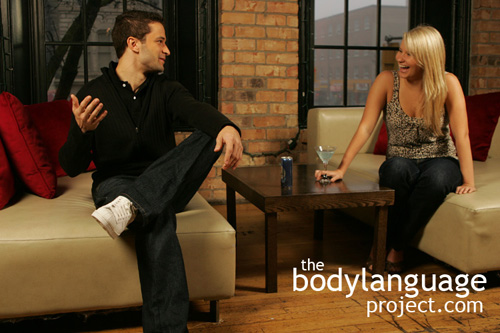Gestures are used in speech to convey information more efficiently or to express attitudes or emotions and as a body language reader they give us clues as to the speakers mental framework from which they speak. Beneficial byproducts of gestures include making speech occur more smoothly and increased liking between speakers and listeners. In the following section we will cover “kinesics” which is the subclass of nonverbal body language that is related to movement. Kinesics is probably the most talked about and most common type of body language but also the most easily confused cross-culturally.
The first full length study on gesture was published in 1644 by John Bulwer. He catalogued dozens of gestures and produced a guide on how to increase clarity and eloquence in public speaking. Further research has shown that some gestures are universal and therefore have ubiquitous meaning across cultures, while others only have local meaning. Other gestures are context specific so mean one thing in one place and can mean something entirely different elsewhere. Pointing, made by extending the index finger and balling up the rest of the hand for example, is one of the gestures that has the same meaning everywhere, but the okay-sign made by touching the index finger to the thumb and flaring out the remaining fingers, as we shall see later, does not.
Some cultures also tend to gesture, called “gesticulation” when used in speech, more or less often than others. For example, Italians are known to use a lot of gestures in speech whereas the English tend to use gestures infrequently. The English culture, on the other hand, deems high rates of gesticulation as being impolite. The high gesture cultures include Hebrew, French and Spanish.
The more social way for us to use our hands is to use them in concert with what is being said, although taken to extremes like the Italians, or lack thereof like the English, can be counterproductive. A balance between the two, will be the best case. The hands and arms add to the dialogue and liven it. Keeping your hands to your sides or your arms crossed tightly might be comfortable, but those that use their hands moderately while speaking appear intelligent and honest when viewed by others. Universally, closed posture come off as negative and anti-social no matter what kinds of truths spoken or positive feelings intended by the speaker. This is why it’s so important to be conscious of our gestures because even if we aren’t, others will be. Whether or not others bring closed body language to consciousness, is not relevant. Our impressions are created in others passively with no active thinking.
The various gestures have been broken down into five categories: emblems, illustrators, affect displays, regulators which we cover next.

